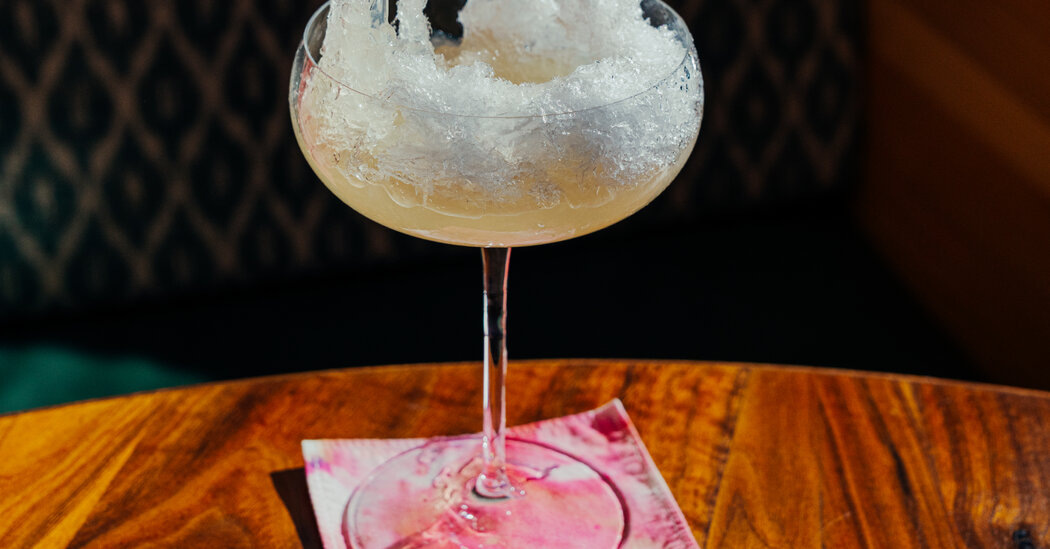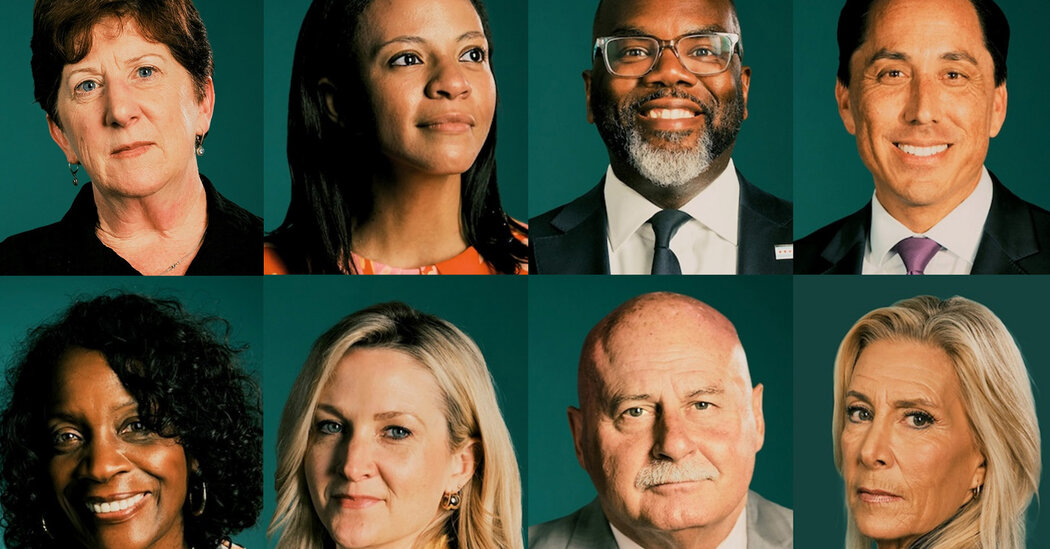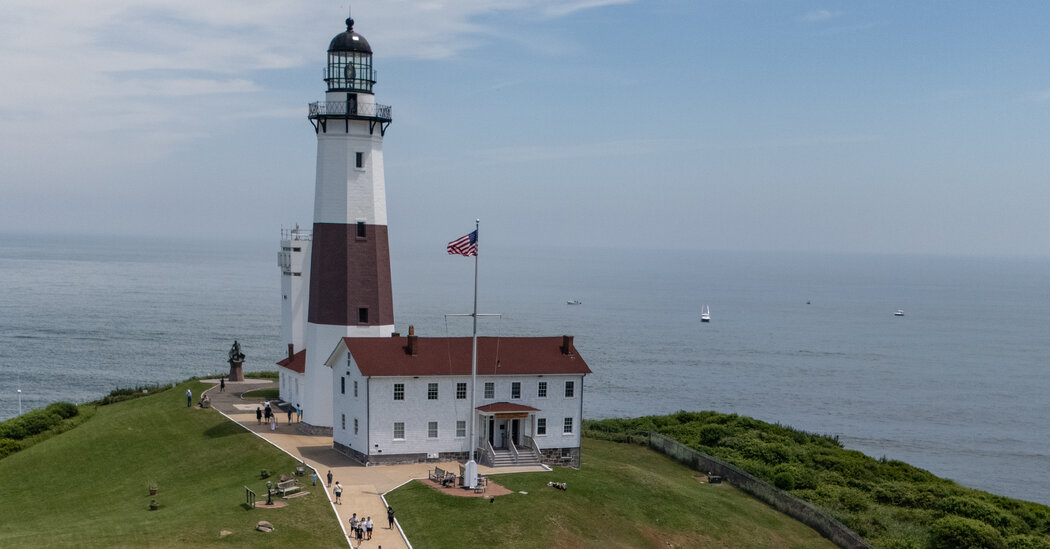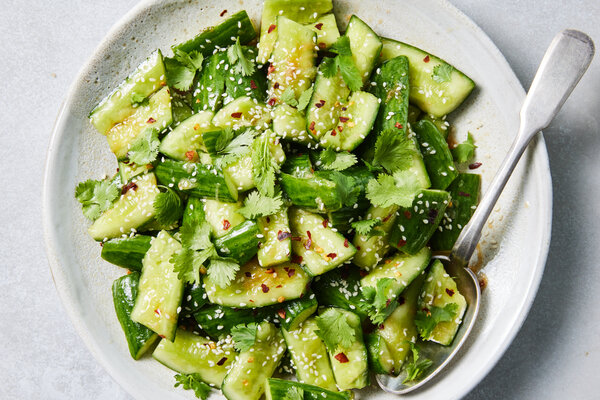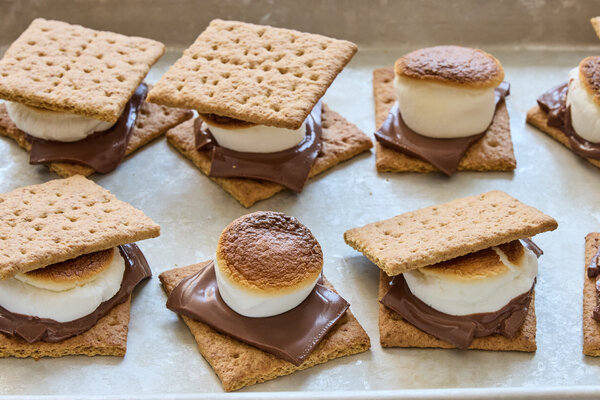Bar Kabawa, the East Village cocktail den connected to the chef Paul Carmichael’s new Caribbean restaurant, Kabawa, will provoke a range of reactions, like any new establishment. But for people who like classic daiquiris, the main one will be: Where have you been all our lives?
Outside Cuba, where it originated, the daiquiri has rarely been treated to such elaborate shows of devotion.
A neon sign in the window advertises “wine & daiquiris” in glowing lavender letters. Daiquiris take up the top half of the first page of the drinks list. Right inside the door, taking up precious real estate on the bar top, is a squat, black, hand-cranked machine that rasps away at blocks of ice. The fluffy heap of snow that drifts down into a glass below is the soft bed over which bartenders pour a freshly shaken daiquiri mixed, as they still are in Havana, from nothing more than lime juice, sugar and rum.
Treatment of this sort — playful, informed, reverent, fetishistic — is now routine for other famous cocktails. Any halfway serious new Italian restaurant is expected to offer half a dozen spins on the Negroni. Manhattans are aged in barrels and zapped in the microwave. In a quest for tooth-rattling coldness, martinis are stashed in freezers overnight, bombarded with ultrasonic waves by equipment meant to clean diamonds and chilled below their natural freezing point with Japanese technology called Supercooling Magic, originally conceived to preserve human organs.
While these drinks were taking their place at the altar, the daiquiri collected a closet full of bridesmaid dresses. It is a relative rarity on drinks menus. It turns up in some tiki bars, but tends to be upstaged by showier, tiki-er drinks like the Missionary’s Downfall. Even those cocktail parlors that serve variations like the Hemingway daiquiri can go for weeks without being called on to shake up the original formula.
This neglect is odd given that many people who’ve spent years behind the bar revere the daiquiri. It’s a secret handshake when one bartender sits at another’s bar, a signal that passes between the person sipping it and the person shaking it that means they both know the score.
“It’s the purest expression of mixology,” said St. John Frizell, an owner of Sunken Harbor Club in Brooklyn and of Gage & Tollner, where there’s one on the menu.
When he ran his own bar, Fort Defiance, he began the training for all his bartenders with a daiquiri session, having them mix the standard, three-ingredient formula in several ratios so they could observe the way minor variations led to markedly different outcomes.
“There’s nothing to hide behind,” Mr. Frizell said.
Early in her career, Karin Stanley, now the beverage director at Lincoln Center, worked at one bar where the bartenders started each shift with a round of daiquiris, and another where they shared a shaker of them when the clock reached midnight.
When she checks out a new bar, “it’s still my litmus test,” Ms. Stanley said. “It’s how I can tell if the bartender has that understanding of the quiet nuance of how it needs to be made.”
Ms. Stanley, who put a $10 daiquiri on the happy-hour menu at David Geffen Hall, gets the credit for naming the Snaquiri, a brief and refreshing pause in the middle of a night of drinking, although the term “pause” is relative given that the Snaquiri is simply a full-strength daiquiri decanted into smaller-than-usual glasses. In some precincts, the Snaquiri goes by the name D.T.O., for Daiquiri Time Out.
Bateman’s, a new cocktail lounge in the East Village, will pour Snaquiri versions of drinks that are still in the research and development phase into little snifters. Their Snaquiris always start with rum, but may take in a pandan liqueur, kumquat oleo-saccharum or fresh Granny Smith apple juice soured with citric and malic acids.
“A Snaquiri is never a perfected cocktail,” said Natasha Van Duser, the beverage director. “It’s always something we’re playing around with.”
Popular as Snaquiris are, true daiquiris aren’t called for very often at Bateman’s or other bars where Ms. Van Duser has served. She suspects that people who’ve tasted sloppily made renditions — ones with bottom-shelf rum or day-old lime juice — will avoid them for life.
“It’s very easy to get a bad version of it,” she said.
Adding another wrinkle to the drink’s image, the word daiquiri can mean two distinctly different things. One, the Cuban original named after the town of Daiquiri, is shaken from rum, lime and sugar and poured into a dignified cocktail glass. The other is frozen in a machine, can contain strawberry syrup, grain alcohol and almost anything else you can imagine, and is usually served in sizes and colors that suggest dignity is not on the agenda.
Frozen daiquiris are the lingua franca at Margaritaville, Chi-Chi’s, the Flora-Bama Lounge and generally any bar where, if you are wearing flip-flops, they are happy to see you.
New Orleans, though, is the world capital of the frozen daiquiri. The city is home to the Voodoo Daiquiri, familiarly known as “purple drank”; the Hand Grenade, which comes in a bewitching antifreeze hue and is garnished with a plastic replica of an explosive device; and the Shark Attack, a specialty of the Tropical Isle that arrives to a symphony of sirens, bells, whistles and screams of “Get out of the water!”
“Anything that’s frozen is a daiquiri,” said Abigail Gullo, the creative director of the bar in the International House hotel in New Orleans. “It doesn’t matter if it uses rum or brandy or bourbon.”
The split in nomenclature can be precisely dated to 1980, the year an enterprising Louisiana Tech student named David Ervin opened a drive-through outlet in Lafayette, La., called the Daiquiri Factory, selling a rainbow of frozen drinks, none of which had much relation to the daiquiri.
“‘Daiquiri’ conveyed a sense of prestige and status, and I concluded that most people had never had one or had no idea of what it actually was,” Mr. Ervin recently told the drinks writer Wayne Curtis. “My branding every frozen cocktail as a daiquiri was a first.”
Today, high-minded bars around New Orleans have transformed Sazeracs, Pimm’s cups, Ramos gin fizzes and Irish coffees into daiquiri form. There are walls of daiquiri machines at weddings, fried-chicken joints and a combination po’ boy shop and bookstore called Melba’s. But for all their jelly-bean colors and fruit flavors, there is one curious fact about frozen daiquiris in New Orleans: They are almost never daiquiri-flavored.
At Bar Kabawa, the daiquiri-flavored daiquiri is called the Kabawa daiquiri, and it is poured over shaved ice, making it a hybrid of a shaken cocktail and a frozen drink. Another daiquiri tastes something like a piña colada. A third incorporates allspice, smoke, salt and habaneros — the flavors of jerk.
“A lot of places can have fruity candy bombs, but that’s not what we’re doing,” said Kathryn Stashek, whose title at both Bar Kabawa and Kabawa is “creative bartender.” A few customers, she said, have admitted to anti-daiquiri bias, but most are wiling to go along for the ride. “The response has been amazing.”
This won’t surprise those bartenders who, like Mr. Frizell, regard the daiquiri as “the perfect drink.”
When they’re well made, he said, “no one doesn’t like them.”
